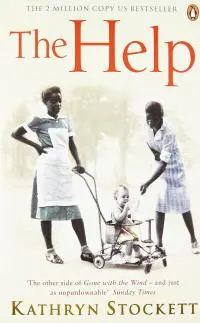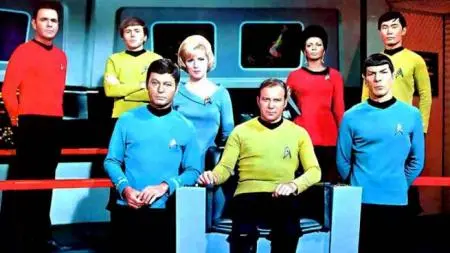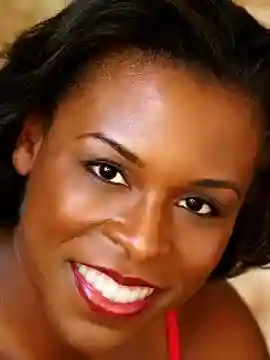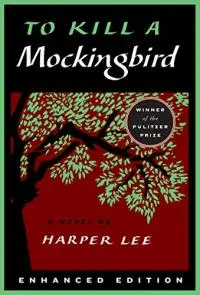Adding diversity to your novel is a difficult task, especially if you’re not part of the ethnic group being portrayed. While this sentiment could spur an argument about the appropriateness of authors writing across racial boundaries or how such efforts diminish the opportunities available for authentic voices, I believe our professional community is better served by discussing how writers can approach race or any other minority status with sensitivity and thoughtfulness. So despite the incendiary title, the goal here is one of unity—to warn all writers about common offenses committed when creating inclusive stories.
1. You Use Race As The Only Defining Element
Writing diverse stories isn’t about ticking off boxes on the political correctness chart, so don’t mistake race for character development. Consider the following example: “The high-strung orderly, stoic surgeon, and Cambodian anesthesiologist gathered around the patient’s heart monitor.” Without knowing anything about this scene, I can anticipate how the first two characters will react if the patient goes into cardiac arrest. With the third character, however, the author confuses race for personality and omits his demeanor. Notice this character’s Southeast Asian background isn’t anchored to anything other than a tokenistic desire to please the audience. Ensure your characters bring more to the table than their sexual orientation, disability, or ethnicity by building character from the inside out.
Need an example of how to do it right? Read Happiness by Aminatta Forna.
![]() 2. You Go Color Blind
2. You Go Color Blind
Conversely, you might decide to avoid all indicators of ethnicity in favor of colorblindness because we’re all part of the human race, right? Besides, isn’t a well-rounded character with realistic motivations all the audience needs? Perhaps. However, race is a legitimate and significant part of who we are, and it’s not something we can ignore when convenient. The world around us still recognizes the things that make us different even if our friends have learned to embrace them. Thus, developing a racially neutral protagonist deprives the character of depth. Consider those of dual heritage, many of whom struggle to balance self-perception with how society actually views them. Bottom line: The conditions surrounding race are never simple, so don’t take the easy way out when it comes to your characterizations.
Need an example of how to do it right? Read Dreamland Burning by Jennifer Latham.
3. You Relegate Inclusive Characters To The Role Of Best Friend
American literature has a “magical minority” problem where diverse characters exist solely to encourage the white protagonist to realize his or her potential. Cut to the best friend, the neighbor, the coworker, or the maid. These inclusions usually reduce ethnic characters to empty caricatures with no authenticity or drive—e.g. the flamboyant gay, the mystical Asian, or the wise old Negro. Sure, you can include a LGBTQIA or Latinx best friend. But when you do so, give those characters their own goals, conflicts, and desires. Don’t saddle them with motivations hitched exclusively to the main character’s whims.
Need an example of how to do it right? Read Let’s Talk About Love by Claire Kann.
4. You Depict Minorities As The White Man’s Burden
People of color are painfully aware that our country has a bloody history of colonization. Therefore, it should come as no surprise that we don’t want to see yet another narrative that shows a hopelessly average white woman saving “the naïve natives” or an otherwise dull white male exceeding in a foreign culture to aid its uprising. Our recent literary and cinematic history has plagued us with enough exasperating examples of this trope from To Kill a Mockingbird (yes, I said it!) to The Help. Such stories may pull heartstrings on the surface, but they ultimately demean minorities by stripping us of agency and dignity.
Need an example of how to do it right? Read Sundown by John Joseph Matthews.
5. You Make A Mockery Of Our Dialects And Languages
Our language is massive. The Standard English dialect that we speak and write exists among dozens of others within this country. We even have minor changes in vernacular from region to region, like the Midwest referring to soda as “pop” or those Philadelphians who love “hoagies” as opposed to subs. So if you’re going to include dialects or foreign languages, do some hardcore research. Nothing shows a writer’s ignorance more than an unrealistic representation of someone else’s culture. Languages and dialects—yes, even Ebonics—have historical significance and should receive the utmost respect.
Need an example of how to do it right? Read On the Come Up by Angie Thomas.
6. You Misappropriate Our Culture
Misappropriation occurs when you write about a group of people in a manner that perpetuates racist stereotypes, misrepresents their culture, and/or flagrantly disregards the historical significance thereof. In other words, you adopt something from an ethnic group because you think it’s cool but fail to illuminate its significance. An example would include a non-Indian or non-Hindu character wearing a bindi merely as a fashion accessory. Minority groups already struggle with finding representations that depict us accurately, so it’s imperative that outsiders do so with intelligence.
Need an example of how to do it right? Read Ink and Ashes by Valynne Maetani.
7. You Assume Ethnicity Without Providing a Touch Point
 Example: “A beautiful Nigerian girl walked into my dorm.” How are you determining this? After all, she could be Jamaican or . . . gasp, Black American. Unless your characters have mental telepathy, precisely determining a person’s ethnicity upon sight is not only laughable, it’s unrealistic. Omniscient viewpoints aside, don’t make gross assumptions until the characters do or say something to verify it. Maybe she speaks with the same accent as your professor who is from Lagos, and she’s wearing a gele, the traditional cloth Nigerian women use to cover their hair. Or heck, just have the character mention it before moving forward. The point is never assume.
Example: “A beautiful Nigerian girl walked into my dorm.” How are you determining this? After all, she could be Jamaican or . . . gasp, Black American. Unless your characters have mental telepathy, precisely determining a person’s ethnicity upon sight is not only laughable, it’s unrealistic. Omniscient viewpoints aside, don’t make gross assumptions until the characters do or say something to verify it. Maybe she speaks with the same accent as your professor who is from Lagos, and she’s wearing a gele, the traditional cloth Nigerian women use to cover their hair. Or heck, just have the character mention it before moving forward. The point is never assume.
Need an example of how to do it right? Read Caucasia by Danzy Senna.
8. Your Group of PC Friends Always Has a White Leader
This isn’t so much problematic as it is tiresome and pervasive. Name just about any diverse group of friends—from Hogwarts to the A-Team—and the leader will inevitably be white. Sure, this is arguably one of the less egregious issues on this list, but the more we encounter this element the louder the subtext rings true: Minorities are great team players, but they can never lead the charge.
Need an example of how to do it right? Read Mexican White Boy by Matt de la Peña.
9. You Use Minorities As A Metaphor For Evil
You’re welcome to make your villain a minority. After all, every group has heroes, leaders, idiots, and baddies. However, I’d caution against depicting an entire community as evil based on media portrayals or your singular visit to a country. Remember, working from scant knowledge or tropes is lazy writing. Start with the universal elements that bind us, and do serious cultural research through books written by members of that community. Enlist people within that group to evaluate your material, and utilize the critiques you’re given. Look past your preconceived notions and prejudices to delve deeper. Ask yourself: Is this characterization malicious? Am I addressing this issue in a way that uplifts or detracts? Then make sure you have an honest understanding of why this diversity element is essential to your story.
Need an example of how to do it right? See the film Black Panther.
10. You Set The Story In A Major City Without Including Diversity
Nothing rings more ridiculous than having a book set in Chicago, San Francisco, New York City, or even Kansas City and not having some form of diversity. This omission seems equally egregious, if not more so, when the plot spans several countries and/or continents—and yes, this criticism includes worlds of your own creation. After all, Star Trek pulled this off over 50 years ago, so you can too!
If you actually live in a major metropolitan area, get out of your comfort zone. Explore a part of the city you rarely visit and study its history. You’re bound to find something that fascinates you and inspires diversity in an organic manner. Even if you still don’t feel comfortable writing outside your race, have your current characters notice the world of color around them. The manuscript will benefit from the added nuance, and the audience will appreciate the effort.
Need an example of how to do it right? Read the Broken Earth trilogy by N.K. Jemisin.
11. You Rely On Stereotypes
Avoid stereotypes like the Native American sage, the Asian martial artist, or the black person who exists only as comic relief. These tired tropes seem innocuous because they’re not overtly malicious, but understand that stereotypes of any sort are harmful because they reinforce the idea that minorities will never evolve beyond those basic societal assumptions. Remedy this problem by discovering what people of color consider offensive. Accept the validity of those arguments without judgment, and resolve to avoid those issues at all costs. Just because these misrepresentations exist, doesn’t mean you should continue the cycle. Learn to work without the crutch of cultural bigotry.
Need an example of how to do it right? Read Deadly Sexy by Beverly Jenkins.

12. You Use White As The Norm
When imbuing your story with diverse elements, avoid introducing characters of color in a manner that further stigmatizes us as “the other” or reduces us to the fringes of society. Take our earlier example: “The high-strung orderly, stoic surgeon, and Cambodian anesthesiologist gathered around the patient’s heart monitor.” Such a statement reinforces whiteness as the desired norm and highlights the person of color as an abnormal development in a world that identifies as Caucasian, straight, able-bodied, and male. Remove systemically racist attitudes by avoiding this type of presumptive shorthand. Instead, celebrate diversity. Describe each of your characters regardless of race, and remember everyone—Sicilians, Greeks, Jews, et cetera—has a heritage to share.
Need an example of how to do it right? Read Underground Airlines by Ben H. Winters.
13. You Resort To Racist Cliches
While I shouldn’t speak for every ethnic group, I want to offer a few examples of how descriptions can turn offensive when a writer doesn’t pay attention to diction. Calling someone “exotic” is not a compliment. You’re labeling them as “other,” “less than,” or “strange and unusual.” Other adjectives like “fiery” or “spicy” in reference to Latins, “sassy” or “nappy” with regard to African Americans, and “tilted” or “slanted” when describing Asians are all offensive terms that perpetuate prejudice. In addition, don’t distill several disparate races into one symbol like chopsticks. Remember, there’s a vast range of diversity among people of color, so be specific.
Also, don’t dehumanize us. A common example is equating skin tone to food. Avoid this insensitive technique as it’s a grave reminder of our history as slave labor involving commodities like coffee, cacao, sugar, et cetera. We are not products to be consumed, so do not treat us as such. Trust your audience is smart enough to grasp cultural cues that go beyond this type of fetish writing. Delve into the myriad of indicators at your disposal such as names, dialects, hair color, body adornments, clubs, or customs. Then go beyond outward appearance and respectfully explore how those elements inform the character’s view of herself and her environment.
Need an example of how to do it right? Read A Duke By Default by Alyssa Cole.
Creating inclusive stories with diverse casts isn’t a skill one learns overnight, and please don’t think this lone essay contains all the answers. This is merely a primer meant to inspire further research. We Need Diverse Books and the Writing With Color Tumblr are great places to ask questions and get involved. Also, seek advice from the people around you—but most importantly, read books by minorities for minorities to get a clear understanding of the issues people of color face each day.

About the author
Andrea is a writer and editor who specializes in mystery and romance. She holds a creative writing M.F.A. from Seton Hill University and a copyediting certification from UC San Diego. Her craft essays can be found on several websites such as Funds for Writers, DIY MFA, and Submittable. She also writes book reviews and entertainment news for the women's lifestyle website Popsugar and is the author of the Victoria Justice Mysteries by Polis Books. These killer courthouse cozies follow a young stenographer who realizes her transcripts hold the key to solving a string of murders (think Law & Order meets Murder, She Wrote). To learn more about Andrea’s work, visit ajthenovelist.com or follow @ajthenovelist on Twitter.
 2. You Go Color Blind
2. You Go Color Blind







